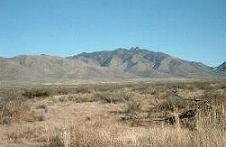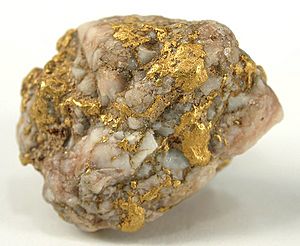Dos Cabezas Mountains facts for kids
Quick facts for kids Dos Cabezas Mountains |
|
|---|---|
 |
|
| Highest point | |
| Peak | Dos Cabezas Peaks |
| Elevation | 8,354 ft (2,546 m) |
| Dimensions | |
| Length | 15 mi (24 km) NW x SE |
| Width | 6 mi (9.7 km) |
| Geography | |
| Country | United States |
| State | Arizona |
| Region | (northeast)-Sonoran Desert |
| Municipality | Bowie, Arizona (Willcox & Fort Bowie-W) |
| Range coordinates | 32°12′30″N 109°34′33″W / 32.208412°N 109.5758974°W |
| Borders on | Chiricahua Mountains-SE San Simon Valley-NE Sulphur Springs Valley-W & SW |
The Dos Cabezas Mountains are a mountain range located in southeastern Arizona, USA. This area is known for its rugged beauty. The name "Dos Cabezas" means Two Heads in Spanish. This name comes from the two granite peaks that stand tall at the top of the range.
A special part of these mountains is the Dos Cabezas Mountains Wilderness. This wilderness area covers about 11,700 acres (4,700 ha) of land. It is located about 20 miles (32 km) east of Willcox and 7 miles (11 km) south of Bowie. This wilderness is found in Cochise County.
Exploring the Geology of Dos Cabezas
The Dos Cabezas Mountains Wilderness has very rugged slopes. The land here ranges from about 4,080 feet (1,200 m) to 7,500 feet (2,300 m) high. You can find many different types of landforms. These include steep mountain sides and large granite outcroppings. Granite outcroppings are places where granite rock sticks out from the ground.
The wilderness also has canyon floors with lots of plants. From the higher mountains and ridges, you can see far away. You can look out over the Sulphur Springs and San Simon Valleys. Many other mountain ranges are also visible from these high points.
Wildlife in the Dos Cabezas Mountains
The Dos Cabezas Mountains are home to many animals. Several natural springs and developed water sources provide water for them. You might see white-tailed deer and mule deer here. Large predators like mountain lions also live in these mountains.
Birds of prey, such as golden eagles and bald eagles, soar above. Many other animals also make their home in this area. The collared lizard can be found in the upper parts of Buckeye Canyon. The peregrine falcon, a very fast bird, flies through this region during its migrations. This falcon was removed from the endangered species list in 1999.
Most of the wilderness is covered in mountain shrubs, desert shrubs, and riparian vegetation. Riparian vegetation grows near water sources like rivers or springs. Since November 2016, the Arizona Game and Fish Department has been sharing photos of a jaguar seen in this area. As of As of 2021[update], there have been 45 documented sightings of this jaguar. This is only the second known jaguar living in Arizona.
See also
 In Spanish: Sierra de las Dos Cabezas para niños
In Spanish: Sierra de las Dos Cabezas para niños


